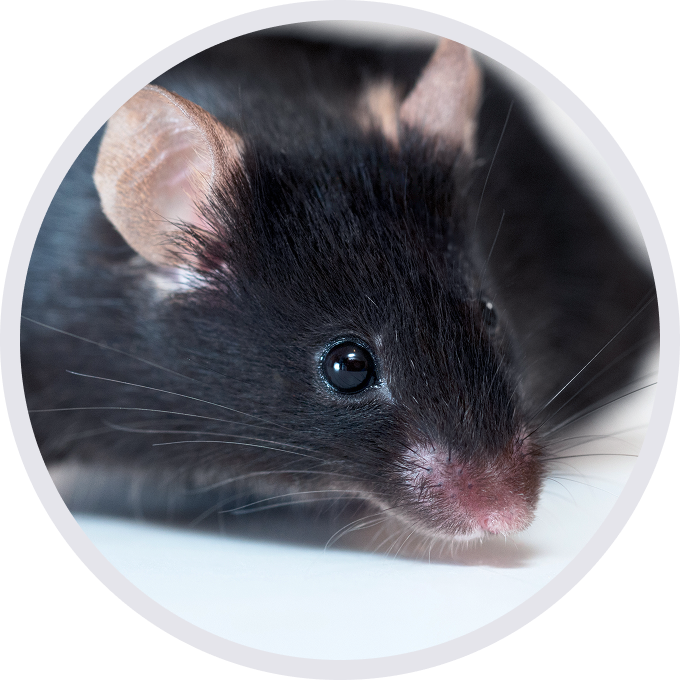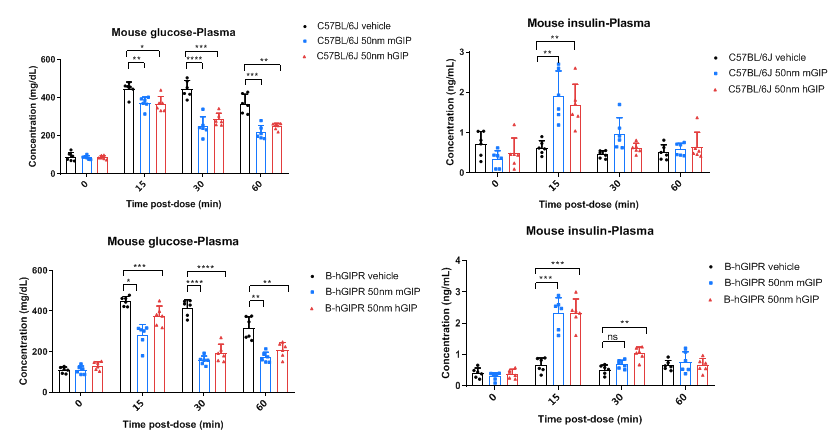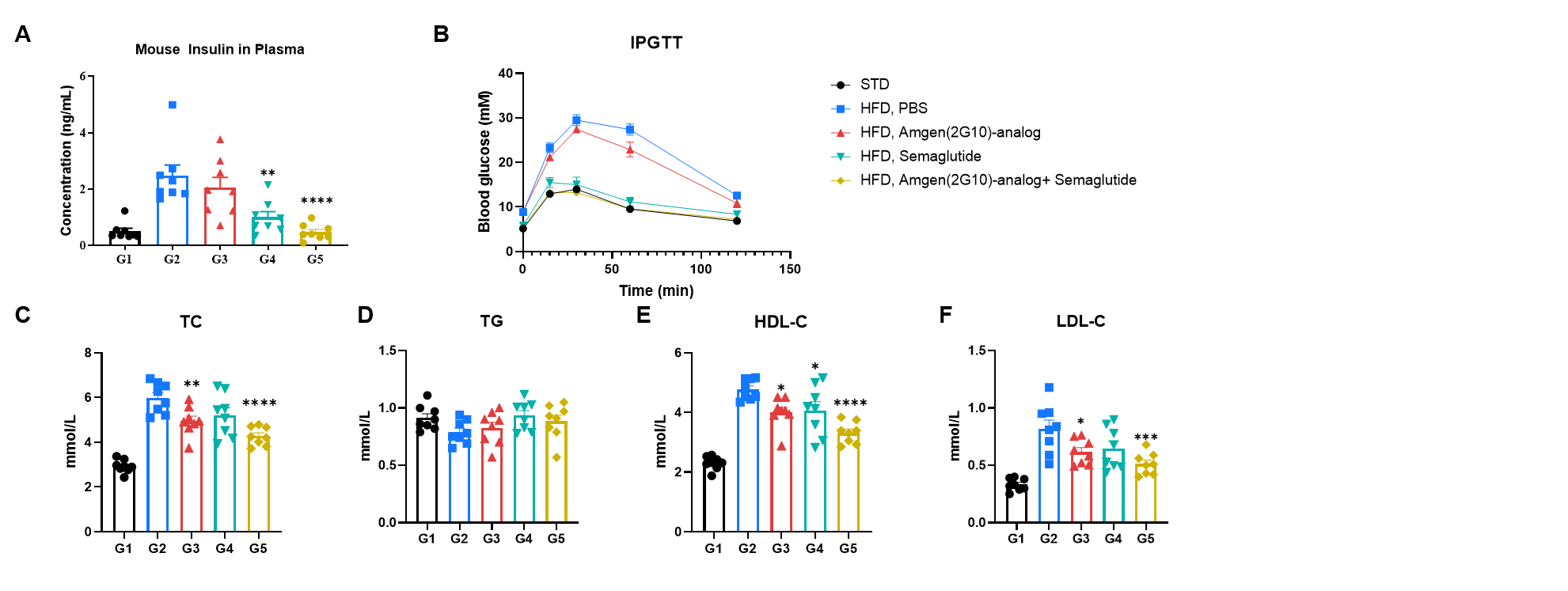
C57BL/6-Giprtm2(GIPR)Bcgen/Bcgen • 112714
GIPR, gastric Inhibitory polypeptide receptor, belongs to G-protein coupled receptor family. GIPR is expressed in many tissues including pancreas, stomach, brain, liver, etc. This protein plays a crucial role in regulating insulin secretion, glucose and lipid metabolism. Mutations or changes within this gene have been associated with various health conditions including obesity and diabetes.
Biocytogen developed a GIPR humanized mice, the full coding sequences of human GIPR gene plus 3’UTR was inserted into the mouse Gipr in-situ. Then, confirmed that human GIPR mRNA was detectable only in homozygous B-hGIPR mice but not in wild-type mice. GIPR protein was detected in brain, stomach, pancreas and liver of homozygous B-hGIPR mice. During the IGPTT, human GIP induced the plasma insulin secretion and inhibit the glucose secretion.
The mice can be used for preclinical pharmacodynamics studies of target-related disease.
Gene targeting strategy for B-hGIPR mice. The full coding region sequences of mouse Gipr gene were replaced by human GIPR CDS + 3’UTR in B-hGIPR mice. As a result, mouse Gipr sequences will be deleted, and only human GIPR will be expressed in B-hGIPR mice.


Strain specific analysis of GIPR mRNA expression in wild-type C57BL/6JNifdc and B-hGIPR mice by RT-qPCR. RNA was isolated from wild-type C57BL/6JNifdc (+/+) and homozygous B-hGIPR mice (H/H), then cDNA libraries were synthesized by reverse transcription, followed by PCR with GIPR primers. Values are expressed as mean ± SEM. (The primer was designed at 5’UTR, so it can amplify both mouse and human GIPR mRNA.)

In vivo function of m/hGIP during IGPTT. Plasma glucose and insulin concentrations were measured after intraperitoneal injection of 50 nmol/kg mouse GIP (Cat. HY-P77948, MCE) or human GIP (Cat. HY-P0276, MCE) and glucose (40%) in wild-type C57BL/6J mice and B-hGIPR mice (male, 6-week-old, n=6). Data represent means ± SEM. Analyzed by 2way-ANOVA,*P<0.05, **P<0.01, ***P<0.001

Efficacy study in HFD induced B-hGIPR mice. B-hGIPR mice were fed with a high-fat diet for 12 weeks to induce mice obesity. (A) Body weight change after HFD induction. (B-C) Body weight change after hGIPR-antibody Amgen (2G10) analog (in house), Semaglutide, and combination treatment. (D) Effect of hGIPR-antibody Amgen (2G10), Semaglutide, and combination treatment on food intake on Day 21. 8 mice per group. Values are expressed as mean ± SEM. Significance was determined by the Ordinary one-way ANOVA compared with HFD PBS group. *p<0.05, **p<0.01,***p<0.001 ,****p<0.0001.

Efficacy study in HFD induced B-hGIPR mice. (A) Fasting insulin after treatment in plasma after 6 hours of fasting. (B) After fasting for 6 hours, mice were intraperitoneally injected with 15% Glucose (1.5 g/kg) for Glucose Tolerance Tests after treatment. (C-F) Blood biochemical analysis after treatment. Values are expressed as mean ± SEM. Significance was determined by the Ordinary one-way ANOVA compared with HFD PBS group. *p<0.05, **p<0.01,***p<0.001 ,****p<0.0001.

Efficacy study in HFD induced B-hGIPR mice. (A-D) Weight of white adipose tissue at the end of the treatment. Values are expressed as mean ± SEM. Significance was determined by the Ordinary one-way ANOVA compared with HFD PBS group. . *p<0.05, **p<0.01,***p<0.001 ,****p<0.0001.

In vivo function of hGIP and GIPR-antibody in HFD induced B-hGIPR mice. B-hGIPR mice were fed with a high-fat diet for 12 weeks to induce mice obesity and were randomized into groups and received vehicle or GIPR antibody Amgen (2G10) analog (in house). Approximately 24 hours later, saline or 0.25 mg/kg human GIP (Cat. HY-P0276, MCE) was given via IP injection, then immediately followed with an IP injection of glucose at 1.5 g/kg. Blood glucose and plasma insulin were measured during IPGTT . Data represent means ± SEM. Analyzed by 2 way-ANOVA, *P<0.05, **P<0.01, ***P<0.001.